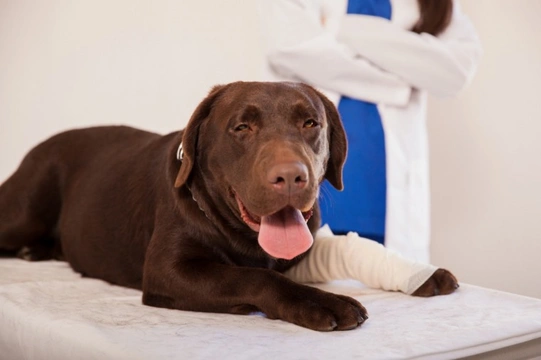Pets
Pets for studWanted petsBreedersAccessories & services
Knowledge hub
Support
Support & safety portal
Total Elbow Replacement in Dogs
Since the seventies joint replacement surgery has been successfully carried out on dogs but it is only over more recent times that hip joint replacement surgery has been included on the list of veterinary procedures that can successfully be carried out on dogs suffering from joint osteoarthritis. If your pet suffers from hip dysplasia and therefore osteoarthritis, the vet may well recommend a total hip replacement otherwise known as THR and the same applies to total elbow replacement (TER). A lot of research has been carried out over the last few years at the Iowa State University by a Dr Mike Conzemius and a company called Biomedtrix, one of the world's largest suppliers of hip joint replacement implants for canines.
What the Procedure Involves
The procedure involves removing the diseased joint surfaces found in the elbow and these are then replaced with a component made out of cobalt chrome humeral together with another component made out of a high-techpolyethylene which is a type of plastic to replace the radio-ulnar. The end result is a synthetic joint where implants are kept in position using a material known as bone cement.
Dogs suffering from certain conditions may undergo this procedure with great success which include the following:
- Elbow osteoarthritis
- Chronic elbow luxation
- Fractures that have not healed correctly
As compared to the hip, the elbow joint is that much harder to replace because there are in fact three separate joint surfaces that meet at the elbow. Where the hip joint is concerned there are only two. On top of this, it is far harder to achieve a natural movement in the elbow than it is in the hip. When it comes to the actual surgery, opening up an elbow up enough to carry out the procedure is more difficult which means the surgery takes that much longer to carry out too.
Although the surgery is considered to be safe there is the risk of complications and this is typically dealt with by a vet fusing the elbow joint (arthodesis). The result is that apart from having a strange gait, a dog would have use of the limb without experiencing any pain but total flexibility would not be achieved.
Why A Dog Would Need to Have the Procedure
Dogs that suffer from certain conditions or that are in constant pain would benefit from a total elbow replacement and the reasons why a vet might suggest this to owners include the following:
- Your dog is suffering from constant elbow pain and experiences constant forelimb lameness
- Where anti-inflammatory medication is not having any affect on their lameness
- Where there is an absence of infection in the joint or on the skin
- Where a neurological disease is not an underlying cause
- Where there are not other orthopaedic conditions evident
What to Expect After Surgery
After the surgery you would see a gradual improvement in your dog's mobility however, six months further down the line you will notice a marked improvement with your pet not having to cope with the pain associated with osteoarthritis. With this said, total flexion may not be possible and a little lameness may continue but this is not due to discomfort but rather to the way the joint's biomechanics have been changed.
Conclusion
Total elbow replacement is a procedure that has been very welcomed by vets over the last few years because it has meant that where options were once limited, now there is one that is a valuable consideration for dogs that suffer with elbow osteoarthritis. If you think your dog may benefit from this procedure you would need to discuss the possibilities of them being candidates with your vet bearing in mind, it is a very expensive procedure but one which may well be covered by a pet insurance plan. This is something else you would need to look into. However, it is well worth it especially if your dog is suffering with a lot of constant pain. Once the surgery has been done, your dog will feel a lot happier being able to lead a pain-free life and still have their mobility.



